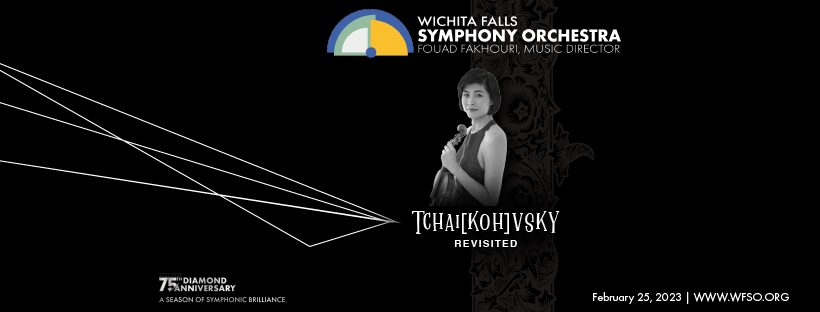Program Notes – February 25, 2023
Written by Todd Giles
Jacques Ibert: Hommage à Mozart (1955)
Jacques Ibert (1890-1962) was an eclectic French composer most well-known for his impressionistic Escales (1922), which was composed as a sort of a travelogue based on the Mediterranean ports he visited in the navy during the First World War, and his lighthearted and humorous Divertissement for small orchestra (1930). Ibert also wrote several operas, ballets, incidental music for the stage, some sixty film scores, and a handful of concertos, songs, and chamber works. Perhaps the best way to describe Ibert’s unique body of work is under the heading of neo-classicism, which was prevalent in France during the latter part of the 19th century (and following World War One). Neo-classicism was a reaction to the lush, lengthy and complex music of the late Romantic period. Ibert’s characteristic sound can be heard in his light and breezy Hommage à Mozart, which he composed in 1955 for the bicentennial of Mozart’s birth the following year. Ibert’s homage is cast in one of the 18th century’s favorite forms, the rondo (think Mozart’s “Rondo Alla Turka”). The Hommage à Mozart is a short, single-movement work which opens with a brief introduction that lays out the main idea, followed by another, presented as a flute solo. The theme returns, followed by another announced by the trumpets. Further development follows before we return to the fast-paced opening idea as the piece concludes with a flourish.
Gabriel Fauré: Pavane in F-sharp minor for Orchestra, Op. 50 (1887)
Like Jacques Ibert, Gabriel Fauré (1845-1924) shied away from large-scale compositions, focusing instead on art song, music for piano, and small-scale orchestral and chamber works. And, of course, there is his ethereal Requiem written shortly after his father’s passing. Also like Ibert, Fauré too was at the Paris Conservatoire in the early 1900s, but as a teacher and later director until 1920. Fauré, who studied under another great French composer, Camille Saint-Saëns, was also influenced by the music of Chopin and Mozart. A neo-classicist like the younger Ibert, Fauré placed special emphasis on form. Whereas the younger Ibert’s music tends to the playful and embraces unusual instruments, Fauré’s is lush, contemplative, and pared-down. 1887 was a productive year for the older composer; along with his Pavane for Orchestra, Op. 50, he also wrote the above-mentioned Requiem and his Piano Quartet No. 2. The Pavane, based on stately Spanish Renaissance court dances, is one of Fauré’s most well-loved compositions for its seductive harmony and slow, dance-like elegance, which is moved forward through a steady undercurrent of plucked strings. As with Ibert’s homage to Mozart, the flute likewise plays an important role in the Pavane by opening the brief three-section work with its graceful melody.
Pyotr Ilyich Tchaikovsky: Violin Concerto in D major, Op. 35 (1878)
To this day, he is held up as the most accomplished and beloved of 19th century Russian composers. Both his first piano concerto and his violin concerto are at the top of the must-perform lists of aspiring virtuosos. For violinists, this is one of the big four concertos in the repertoire—the others are by Mendelssohn, Beethoven, and Brahms. Pyotr Ilyich Tchaikovsky (1840–1993), like Beethoven before him, wrote only one violin concerto, also in D major. While he respected Beethoven, his favorite composer was the more restrained Mozart. Of the two, he wrote: “I bow before the greatness of his works—but I do not love Beethoven. My attitude towards him reminds me of that I experienced in childhood towards the God Jehovah. And if Beethoven occupies a place in my heart analogous to the God Jehovah, then Mozart I love as the musical Christ.”
Tchaikovsky wrote the Violin Concerto in D major, Op. 35 in 1878 while self-sequestered in Switzerland to recover from his depression and half-hearted suicide attempt just three months following his marriage of convenience to the younger Antonina Milyukova in an attempt to mask his homosexuality. This is also the period another female fan reached out to Tchaikovsky through the post. Nadezhda von Mech was a wealthy, newly-widowed admirer of the composer’s music who graciously donated a substantial annual allowance which enabled him to extricate himself from his wife and focus on his art without having to teach to earn a living. Though emotionally wrecked, taking the rest cure on the shores of Lake Geneva provided Tchaikovsky with one of his most productive bursts of creativity, the fruits of which include not only his sole violin concerto, but also the Fourth Symphony and the opera Eugene Onegin.
The Violin Concerto likely would not have been composed at all had Tchaikovsky not received an extended visit from his composition student, Iosif Kotex, who arrived in Clarens with a sheaf of music for violin and piano to share with his teacher. Among the compositions Kotex brought from Berlin, where he was studying violin under Joseph Joachim, was French composer Edouard Lalo’s Symphonie Espagnole. Inspired by Lalo’s work, the two sketched out the concerto in just eleven days; within a month, the work was completed. It did not premier until 1881 in Vienna, however, because its initial dedicatee, Leopold Auer, believed some of solo passages needed to be reworked. Yong Kotex likewise turned down the chance to perform the work because he was afraid its lackluster reception would harm his burgeoning career. Two years later, Adolf Brodsky introduced the work in Vienna, where it received a scathing review by Eduard Hanslick that stuck with Tchaikovsky the rest of his life. As Hanslick put it, “The violin is no longer played: it is yanked about, it is torn asunder, it is beaten black and blue. . . . Tchaikovsky’s violin concerto brings to us for the first time the horrid idea that there may be music that stinks to the ear.” Hanslick’s initial impression was quickly overridden, as the Violin Concerto in D major remains one of the most well-beloved crowd-pleasers in all of the classical repertoire with its lyricism, emotional appeal, and unforgettable melodies.
Ludwig van Beethoven: Symphony No.5 in C minor, Op. 67 (1808)
Mozart and Haydn were at the peak of their fame in the latter part of the 18th century when the young Ludwig van Beethoven (1770-1827) arrived on the scene. Although he tried to distance himself from his Classical predecessors whose shadows loomed large, Beethoven still found much to admire in the music of Mozart in particular. Indeed, Count Waldstien, Beethoven’s hometown patron, sent the twenty-two year old Beethoven to Vienna in 1792 to “receive the spirit of Mozart from Haydn’s hands.” Talk about lineage. Although he briefly studied with both Haydn and Salieri, his admiration for the Napoleonic ideology of self-made greatness sweeping much of Western Germany at the time led Beethoven to strive to achieve new artistic heights by expanding traditional compositional limits as far as possible.
By the time Beethoven wrote his most famous work (the most famous classical work, for that matter), he was in the heart of what musical historians have labeled his Middle Period (1804-1812), which was characterized by an emotional directness coupled with a sense of urgency and expressiveness. It does not get more direct than the opening four-note rhythmic motif of the Fifth: ba-ba-ba—bah! Though Beethoven denied it, many say the Fifth represents “Fate knocking at the door,” referencing Beethoven’s comment from the time that he “shall seize Fate by the throat.” Whatever the story or meaning behind his Fifth Symphony, Beethoven, more than any other composer, willed himself to greatness with this and other works. He was music’s great individualist, setting the prototype of the wild-haired Romantic composer whose liberating and spiritual works transcend formal and stylistic limits.
Beethoven worked on the Symphony No. 5 for four years, finally premiering it himself in Vienna during the winter of 1808 on a marathon program that included not only the Fifth, but also his Symphony No. 6, the Choral Fantasy, the Piano Concerto No. 4, and selections from the Mass in C. Beethoven was suffering from severe hearing loss by this time, so much so that he could no longer properly follow the orchestra’s tempo. That he conducted for what by today’s standards would be in insufferably long (and freezing) concert, highlights his single-mindedness as an artist.
With the four bold opening notes of the first movement of the Fifth, we are introduced to one of those exceedingly rare artistic achievements that literally change the face of their medium’s progress forever. There’s no going back to composing a la Haydn and Mozart after the Fifth. Conflict and turmoil move this, the shortest opening movement of Beethoven’s nine symphonies, forward. The second movement is a set of variations on two themes; the first, a lyrical melody for the cellos and violas; the second, a march for timpani and trumpets. The third movement returns the opening theme to the foreground before being overtaken by the agitation of hushed cellos and basses. The finale is exalted, sweeping, and triumphant. Here Beethoven pushes what the form can do even further by introducing three new voices into the symphonic literature for the first time—the piccolo, contrabassoon and three trombones. In a word, the Symphony No.5 in C minor is iconic.





